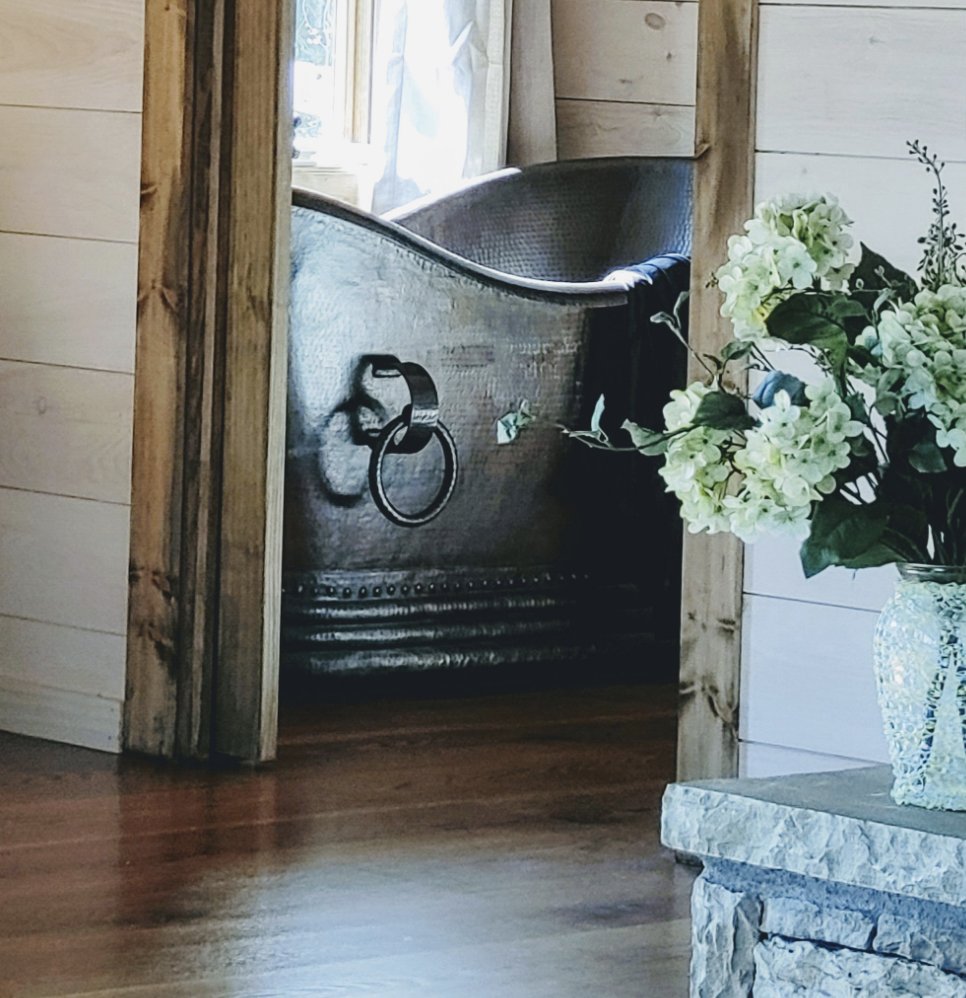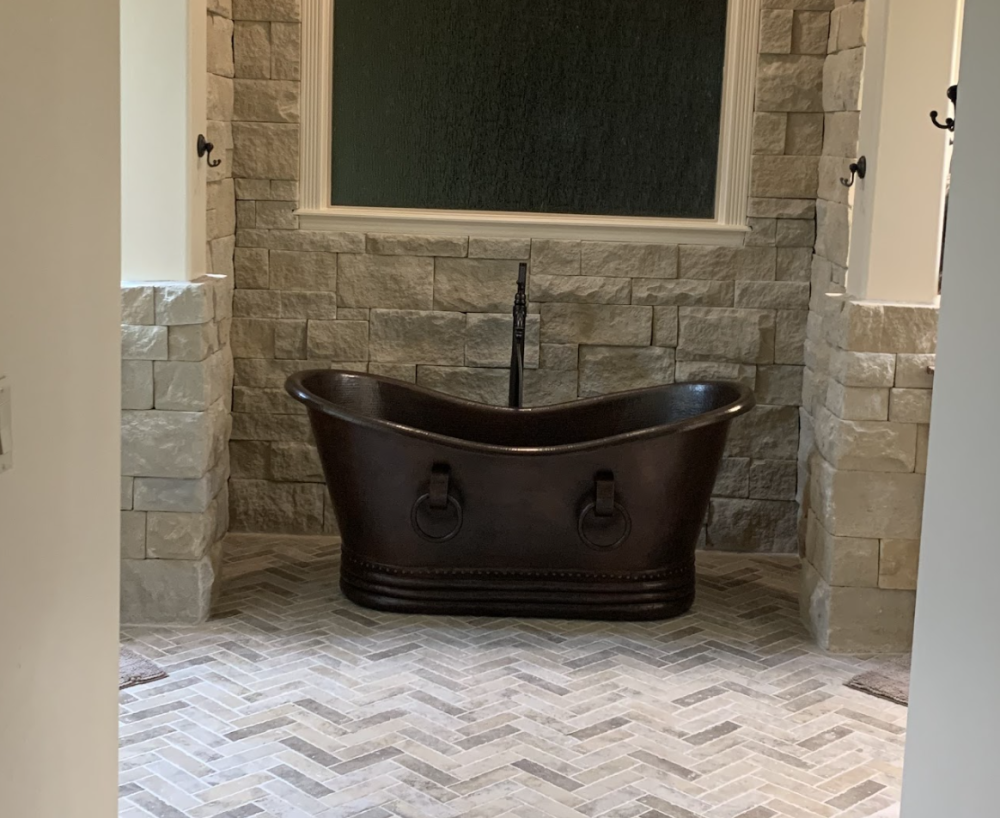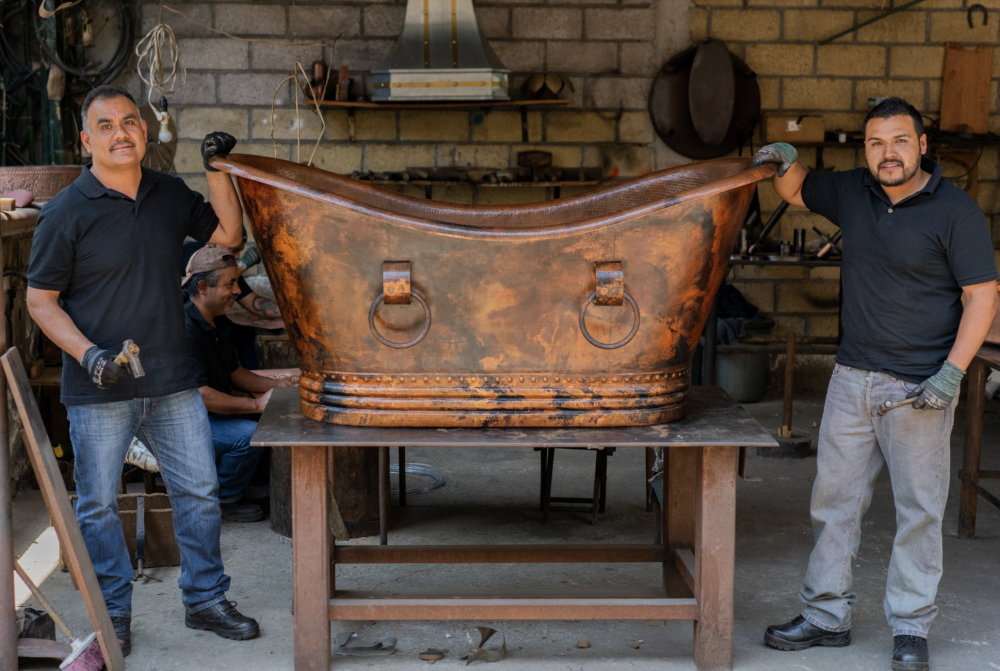The history of copper bathtubs spans thousands of years, evolving from simple water vessels in ancient civilizations to the luxurious fixtures they are in modern bathrooms. Explore the journey of copper bathtubs from their early use in ancient cultures to their rise as symbols of elegance and refinement in the 19th century. Along the way, we’ll highlight their craftsmanship, cultural significance, and lasting appeal which continue to make them a sought-after choice for homeowners today.
Copper Bathtubs in Ancient History

Copper bathtubs have a long history, with their origins tracing back to ancient civilizations as early as 3000 BCE. Over time, copper tubs began to symbolize luxury and social status, particularly in ancient Mesopotamia, Egypt, Greece, and Rome. Interestingly, ancient Egyptians were some of the first to develop copper-based plumbing systems, using copper pipes and baths in royal palaces and temples, where the metal was valued for its ability to resist corrosion from the constant contact with water.
An interesting fact about copper bathtubs in ancient times is that they were often used in royal and ceremonial settings, as copper was believed to have healing properties and was associated with purification rituals in cultures like ancient Egypt and Mesopotamia.
Copper bathtubs in these cultures were often reserved for the elite, further cementing their association with wealth and refinement.
History of Bathtubs in Colonial America
Back in colonial days, if anyone had a tub, it was made of wood. Wooden tubs worked fine, but they required a lot of maintenance and were one reason why bathing was considered to be a luxury back then. The tub had to be dragged in from wherever it was stored, and water had to be brought in from the well or a stream. The water was then heated and poured into the tub.
Additionally, soap was not in common supply, as it all had to be handmade. Soft soaps were often made with mutton fat, wood ash, and natural soda ingredients. Sometimes they included flowers and herb oils for a sweet scent. However, these soaps were very expensive and beyond the budgets of most families. Hard soaps usually consisted of olive oil, soda, lime, herbs, and flowers, but they were also expensive.
Some of the obstacles, though, were less about difficulty and privacy, and more about a belief system. Some colonists believed that bathing destroyed the body’s natural oils, leaving them vulnerable to disease. Therefore, a lack of sophisticated bathing areas was not a problem for them.
Other colonists, however, didn’t buy into that belief. They swam in rivers and lakes to stay fresh, some even in winter. William Byrd II, considered the founder of Richmond, Virginia, was known to take hygienic baths in the James River in Virginia, much to the displeasure of his unenlightened neighbors.
Eventually, St. George Tucker of Williamsburg, Virginia, a prominent legal and constitutional scholar during the time of the American Revolution, installed the first copper bathtub in the colonies. He placed the bath in his barn, got his hot water piped in from the laundry, and the cold water from his well. No lugging and hauling, and the rest is copper bathtub history.
The Rise of Copper Bathtubs

In the mid-1800s, the arrival of modern bathtubs revolutionized bathing, particularly with the introduction of indoor plumbing, which made heating water more convenient. During this time, copper became a favored material for bathtubs due to its durability, malleability, and aesthetic appeal. Copper tubs were often paired with bronze or decorative feet, adding a touch of elegance to the bathroom. Copper’s resistance to corrosion made it an ideal choice for tubs that needed to withstand both heat and moisture.
Though cast iron was widely used in sinks and other fixtures, it was not practical for bathtubs as it tended to rust and expand when exposed to hot water. In contrast, copper’s unique qualities allowed it to retain its form and beauty over time, making it a luxury material for upscale bathrooms.
By the late 1800s, the Victorian era saw the emergence of more elaborate bathroom designs, with copper bathtubs becoming a symbol of luxury and refinement. These bathtubs were often featured in grand homes or among wealthier households, where space allowed for more sophisticated bathroom setups, complete with multiple water fixtures. However, copper tubs were still relatively rare and expensive, often reserved for the affluent.
As bathrooms became more sophisticated, so did the craftsmanship of copper bathtubs. The rise in popularity of copper tubs continued into the early 20th century, especially among those who sought high-end, custom designs. Unlike porcelain or ceramic tubs, which could be heavy and difficult to transport, copper bathtubs were lighter and could be shaped into unique forms, further adding to their appeal.
Today, copper bathtubs remain a symbol of timeless beauty and durability. Vintage-style copper bathtubs are a sought-after choice for homeowners looking to bring a touch of luxury and history into their modern bathrooms.
Copper Bathtubs in Art and Media

Copper’s appeal as a bathing vessel means it has been featured in many works of art throughout history. One of the most famous is called Woman in a Bath Sponging Her Leg by Edgar Degas, and is featured at the Musée d’Orsay in Paris as part of its Impressionist collection. Painted in the early 1880s, it depicts a copper bathtub that shows up in many of Degas’ paintings.
At the Salvador Dali museum in Spain, you can see the copper bathtub that Dali bought in 1952 for over 100,000 francs, which had originally been made for Edward VIII. According to one description, “The long, graceful neck of a swan jutted from one end of the tub. The rear portion of the bird, complete with intricately crafted tail feathers folded in at the sides, completed the exterior.”
Modern copper bathtub aficionados can turn to Instagram and Pinterest, where they’ll find plenty of inspiration for their own home.
Reasons to Buy a Copper Bathtub
Copper is one of the most durable yet malleable and attractive metals, making it a prime candidate for bathtub manufacturing. With a rich history, copper bathtubs are long-term investments that add character and a sense of luxury to bathrooms. Though more expensive to purchase than traditional tubs, their timeless beauty and unique craftsmanship make copper tubs a worthwhile choice for those seeking elegance and durability.
One of the major benefits of owning a copper tub is its ability to complement almost any bathroom décor, from traditional to modern and antique styles. At World CopperSmith, we offer a wide range of customizable bathtubs, allowing you to choose everything from shape and size to finish and detailing.
If you have questions about how a copper bathtub can elevate your bathroom or are curious about customization options, don’t hesitate to reach out. Our team is here to help you find the perfect copper bathtub for your home. Contact us today to start bringing your vision to life!
